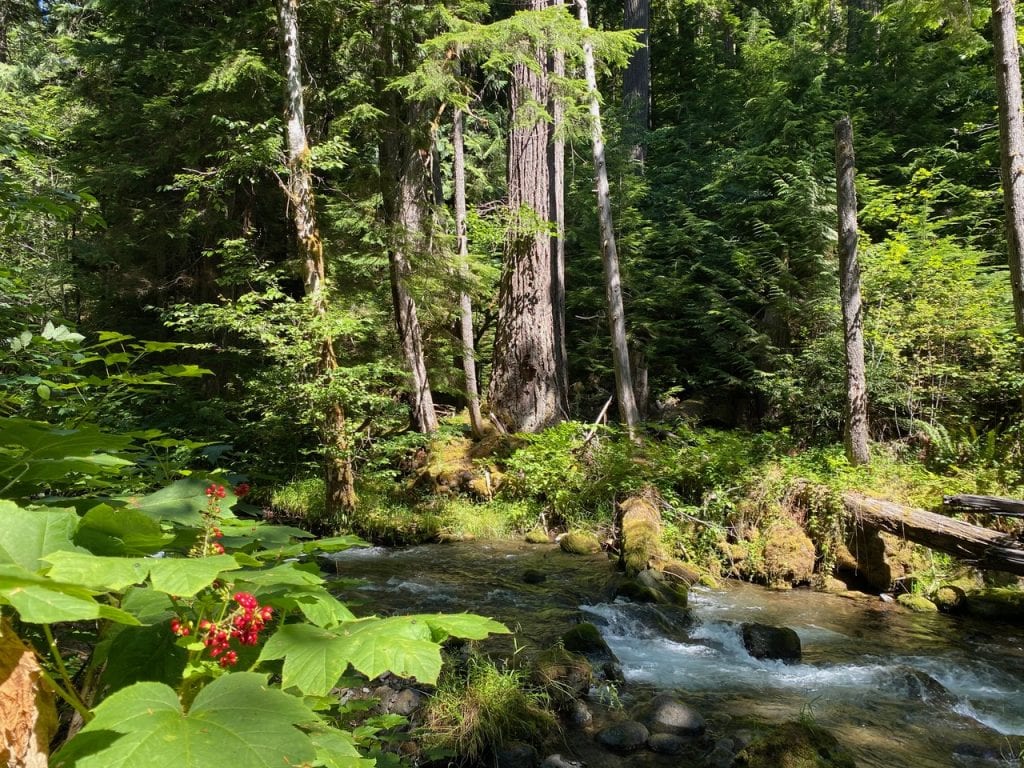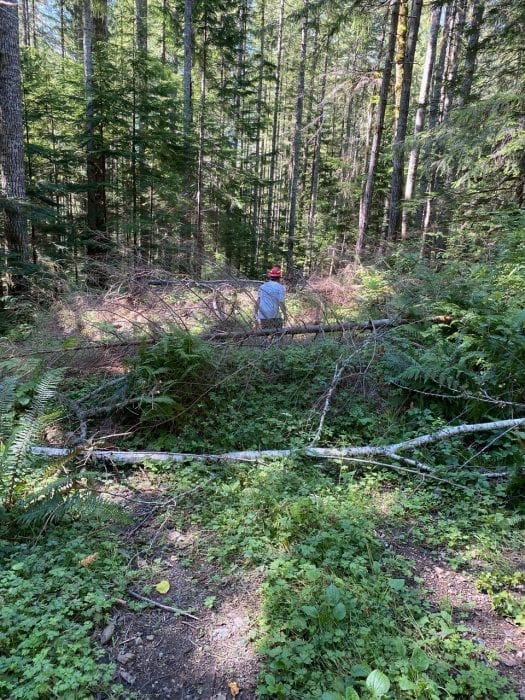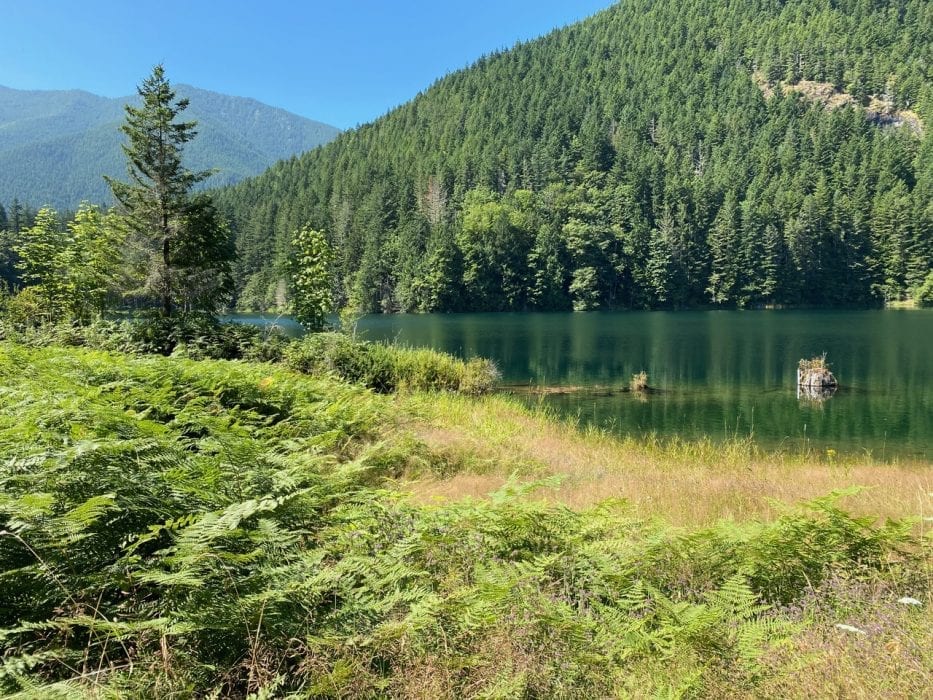My car was third in a convoy of six vehicles turning off the main highway and onto a gravel road that wound upward through the thick forest. COVID-19 safety measures dictated that each person be in one car, so six people = six cars. Not the easiest way to go see restoration work in the Olympic National Forest but I was happy to be outdoors.
Our mission for the day was to see how the Forest Service was protecting water that eventually flowed downstream and out of the taps of nearly 6,000 households in Port Townsend, WA. Water is often lost in the debates over how public lands should be managed, even though half of the U.S. population relies on these lands to capture and filter their drinking water.
It may be surprising to some, but the National Forest System was not created solely for logging or even recreation. Way back in the 1880s, clear-cut logging in the Northeast left hillsides bare leading to erosion and flooding. As people saw clear streams that they depended on for water turn into muddy torrents, communities raised the alarm. Congress responded in 1897 with the Forest Service Organic Administration Act, reserving headwater forests for the purpose of “securing favorable conditions of water flows.” Today, national forests are the country’s largest single source of water. But is this valuable resource protected?

Water from this creek enters the Big Quilcene River, which supplies drinking water to Port Townsend, WA. Photo by WildEarth Guardians.
Big cities like Seattle, Denver, Portland, and Salt Lake City often have the funds and staff time to invest in actively caring for the watersheds that supply clean water to millions of people. But smaller towns like Tillamook, OR or Port Townsend, WA have much smaller budgets. They depend on the Forest Service to safeguard the rivers and streams that supply drinking water. We were on our way to one of those important streams – hence the convoy.
In the forest, we stepped out of our cars and began finding our way over logs, past swordferns and thimble berry bushes, as we moved towards the sound of water below. We were on a hillside just above the Little Quilcene River. This water, along with the flows from the Big Quilcene River, is drawn into a pipeline that travels 30 miles to Port Townsend—completely by the power of gravity. When the water upstream in the forest is clean, then as the water exits the pipeline downstream, less effort and money is needed from the city to treat the water.

Trees, brush, and a large ditch are used to deter people from driving cars too close to a drinking water source stream. Photo by WildEarth Guardians.
The “bushwhacking” we were doing was through a former road that had never been part of the official Forest Service road system but some people used any way. These incursions left behind human waste, trash, and had the potential to start fires—all of which impact drinking water quality. The Olympic National Forest received a grant last year from the Drinking Water Providers Partnership to restore this roadbed to natural conditions. On our visit, we could see wetlands reemerging and native plants spreading, creating a wider perimeter of protection around a valuable water source—a shining example of how restoration can work successfully. Thanks to the grant, the Forest Service was able to complete the work, so that this drinking water supply will be cleaner for the thousands of people downstream who rely on it.

Ensuring drinking water is clean at its source saves residents costs at the tap. Photo by WildEarth Guardians.
Large and small threats to drinking water exist in national forests across the U.S. Trash and human waste contaminates critical streams. Dirt from roads muddy the water, shutting down treatment plants. And drought related to climate change reduces water availability. Instead of protecting waterways, the current administration’s singular priority is to cut trees. Ignoring the 140-year-old mandate to “secure favorable conditions of water flows” is unacceptable. We need to demand a complete transformation of the administration and agency leadership. The solutions are simple. Expanding protections for roadless areas, riparian areas, and wetlands can safeguard streams. Removing harmful infrastructure helps restore natural processes. Grounding land management actions in climate change science would ensure watersheds’ resiliency. Water is life and people in towns from Port Townsend, WA to cities like Atlanta, GA need assurance that their drinking water is protected.
Oregon and Washington drinking water suppliers, tribes, and NGO’s are currently invited to submit applications for the next round of grant funding from the Drinking Water Providers Partnership. Information can be found here and the deadline for submission is January 8, 2020.